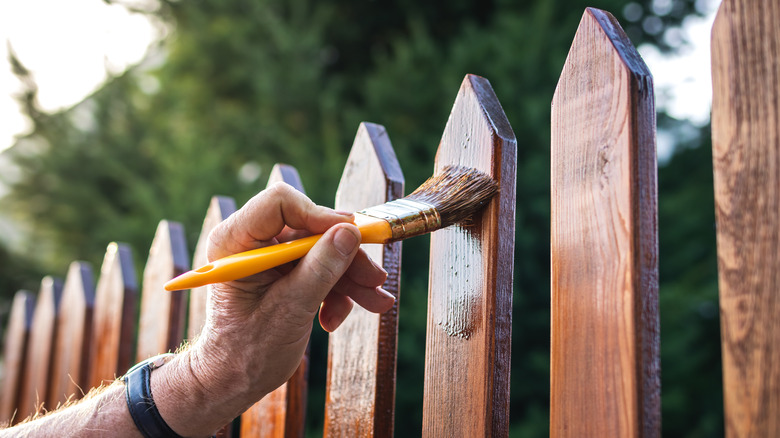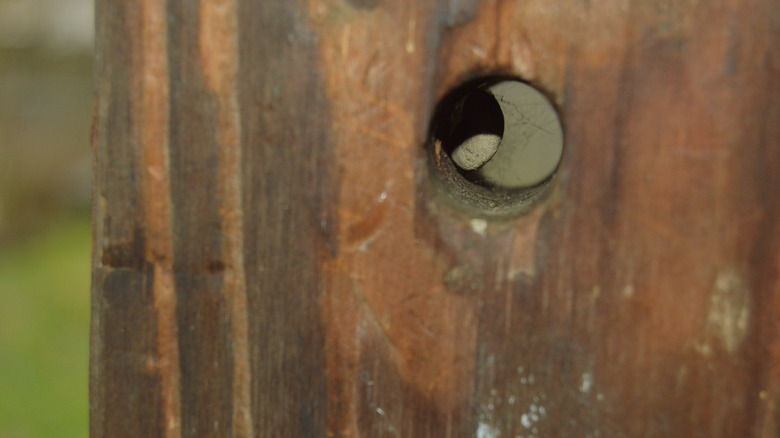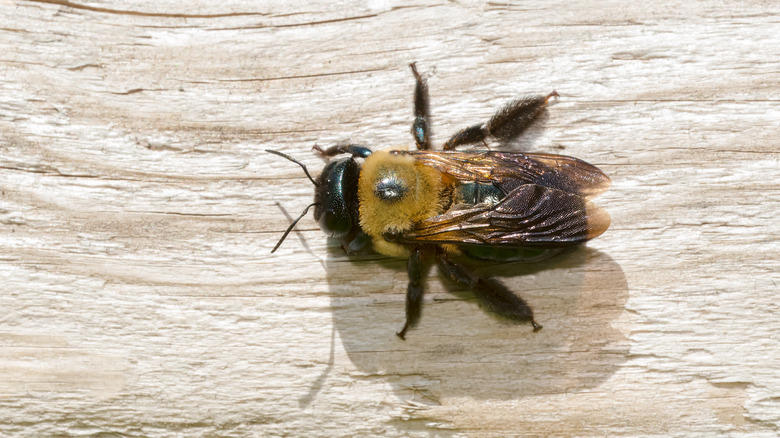The Most Important Place To Use Wood Stain That You're Probably Missing
If you've ever walked through a home improvement store, you've probably noticed an aisle dedicated to wood sealers and stains, but what is the difference? According to Plasticine House, wood sealers are clear, while wood stains actually color the wood. They essentially protect the wood in similar ways, but wood stains also have the ability to protect it from UV rays. Wood stains come in many colors, including dark walnut, red mahogany, and golden oak, as mentioned by The Home Depot. There is no right or wrong when it comes to choosing a wood stain; it all comes down to your personal preference and taste.
The most common use for wood stain is to give the surface a more attractive color than its natural one, Wood Improve states. The stain also maintains the integrity of the wood grain; however, there are plenty of other practical uses for wood stain besides protection that some homeowners may have not even heard of. Here is the most important place to use a wood stain that you're probably missing.
Drive away carpenter bees on your deck
Carpenter bees are notoriously known for nesting in wooden decks. The reason is that female carpenter bees use wood as a place to lay their eggs, Pest World explains. Carpenter bees do not actually live in the wood; they simply help drill holes for the female bee. Carpenter bees look for unpainted wood to burrow into, explains the College of Agricultural, Food, and Environment. That being said, staining your deck decreases the chance of carpenter bees claiming it as their own.
Keep an eye out for signs of carpenter bees. If you notice holes in the wood with sawdust beneath them, there's a good chance your deck has been attacked by carpenter bees. If you're still unsure whether or not your deck has become their home, another tell-tale sign of is bee activity near the holes. The males will hover by the holes to protect the females and their larvae.
Are carpenter bees harmful?
Despite what you may think, carpenter bees are not actually harmful to humans, notes Orkin. Male bees may come off as aggressive because they are marking their territory, however, male bees don't have stingers, so even if you aggravate them, you're not at risk of getting stung. Female bees do have stingers but rarely use them. Unless you provoke or give them a reason to sting, female bees will leave you alone. Although they can look similar, bumblebees and carpenter bees are not the same.
The best way to tell which is which, is by looking at the color of their abdomens, says Triangle Pest Control. Bumblebees' abdomens are fuzzy and yellow, whereas carpenter bees are sleek and shiny. Additionally, carpenter bees are larger than bumblebees, and you can tell the two apart by their flying patterns. Bumblebees tend to fly in straight lines, and carpenter bees typically fly in unpredictable patterns, diving and swerving through the air.


